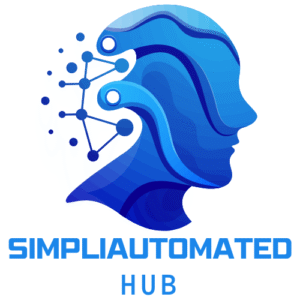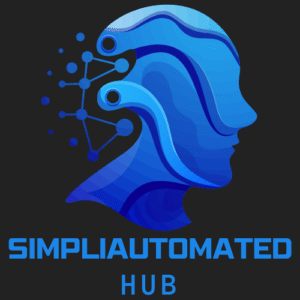You’ve probably noticed it—the sheer volume of “AI-powered” apps showing up in your inbox, newsfeeds, and pitch decks. From slick marketing automation to relentless “productivity boosters,” it feels like everyone’s promising a shortcut to the future.
But here’s the punchline: Most of these tools blend together, shouting the same features and barely scratching the surface of real business needs.
So, why do some solutions actually get adopted, while others fade into obscurity? It’s not luck—it’s a matter of finding your unique angle in the noise.
- Standout success stories aren’t built on generic AI hype
- Only those who solve a real, urgent problem in a fresh way get noticed
- The ability to translate efficiency gains into measurable impact—that’s what makes your AI tool “must-have,” not just “nice-to-have”
If you’re a tech-savvy marketer, business owner, or workflow architect, you know that outcomes—not buzzwords—get leadership buy-in and user excitement.
The challenge? Low-code tools and APIs have lowered the barrier to entry across the board, so “being there first” no longer cuts it. Now, it’s about defining and owning a space that feels tailor-made for your users’ toughest bottlenecks.
In this guide, you’ll discover how to:
- Spot game-changing opportunities in a saturated market (without endless guesswork)
- Turn overlooked pain points into product goldmines
- Build a unique value proposition that resonates with real decision-makers
We’ll break down proven frameworks, share memorable real-world examples, and give you practical steps—no fluff, just the strategies that help you thrive where others settle for blending in.
Ready to see what’s really driving standout brands in the AI automation world? Let’s unravel the realities of the modern automation landscape—and where your expertise could make you impossible to ignore.
Understanding the Realities of the AI Automation Landscape
Picture this: You’re standing in a hall packed with innovators, each demoing AI tools promising to save time, boost results, or “change the game.” The AI automation space is buzzing—and for good reason.
Companies across every industry—from marketing to customer support—are racing to digitize, streamline, and outsmart their competition.
- Efficiency obsession: 74% of businesses say improving productivity is their top reason for adopting automation.
- AI reaches new corners: Sales workflows, back-office ops, and even compliance automation are now fair game.
- Easy to enter, tough to stand out: Thanks to low-code tools and cloud APIs, anyone can build basic automations. But earning serious attention means crossing a much higher bar.
Why “AI-Powered” Isn’t Enough Anymore
Here’s a hard truth: AI-powered branding alone is yesterday’s differentiator. Customers are numb to buzzwords, and they’re hunting for solutions that deliver real-world impact.
- “AI-powered” fatigue is everywhere—LinkedIn is awash with vague promises that rarely pan out.
- What works? Outcome-oriented positioning. If you can say, “Our workflow saves content teams 12+ hours per week, not just ‘boosts efficiency,’” you’re already ahead.
Key quotable takeaway:
“In 2024, ‘AI-powered’ is wallpaper. Clear, measurable outcomes are the new status symbols.”
The Secret Sauce: Niche Discovery Isn’t Guesswork
To find white space in AI automation, it’s all about real pain points—not just generic “process automation.”
- Dig deep into customer needs with AI-driven tools: scan review sites, support forums, or even social media sentiment to reveal urgent gaps.
- Use data to spot under-served or emerging market pockets—think of logistics startups automating last-mile deliveries or compliance tools tackling new regulations.
Imagine a dashboard lighting up with clusters of complaints around a slow onboarding process. That’s real-time insight into where automation can make a measurable difference.
Critical Success Factors for Standing Out
Break away from the noise by zeroing in on:
- Authentic pain points (beyond what generic platforms offer)
- Markets where the “big players” still haven’t solved lingering bottlenecks
- Timely trends—like regulation shifts or remote work spikes—using live data
Key insight:
“The fastest path to a unique angle is solving a neglected problem so specific, your future customers can’t help but say, ‘Finally, someone gets it.’”
If you’re serious about AI automation, remember: finding your niche starts with understanding where the crowd is stuck—and where your expertise can move the needle.
Frameworks for Niche Discovery and Competitive Positioning
Mapping the Terrain: Customer, Competitor, and Capability Analysis
Finding your unique angle in AI automation starts with mapping the ecosystem—think of it like charting new territory before launching your flagship.
To validate what really matters, use:
- Data mining in support forums, review sites, and customer feedback to uncover urgent pain points
- AI tools for sentiment and intent analysis—quickly surface burning issues and priorities
- Customer journey mapping to reveal “automation gaps” where manual work or frustration reigns
Picture this: You scan real feedback about a popular CRM, and discover dozens of marketers lamenting multi-step manual exports. That’s your opening.
Scouting the competition means digging for white space:
- Scan competing tools for features, integrations, and pricing using AI-driven matrices
- Spot where competitors fall short—like slow automation speed, clunky interfaces, or missing connections to mainstream platforms
Audit what you bring to the table by compiling:
- Domain expertise no one else can match (e.g., years in a niche industry)
- “Unfair advantages” like insider workflows or exclusive datasets
- Proprietary access to tools, partners, or emerging tech
Creative Ideation: Finding Your Unique Value Proposition (UVP)
Standing out in a crowd isn’t about shouting “AI-powered”—it’s about delivering results nobody else can match.
To build a bulletproof UVP:
- Go beyond “automation for X” by getting specific: “automation that saves 20+ hours monthly for remote SaaS teams”
- Use outcome-oriented messaging—talk productivity boosts or cost reduction, not just software features
Want differentiation that sticks? Consider:
- Hyper-personalized AI integrations (think: sales emails written for each contact’s style)
- Proprietary algorithms or data no one else can access—turn these into your moat
Now, make it real. Workshop, prototype, and validate with:
- Low-code MVPs or workflow demos pushed live in a week, not a quarter
- Landing page tests aimed at actual end users—ask specific questions and listen closely
- Fast feedback cycles—capture what resonates and double down on what fills a gap
When you “map the terrain” and use creativity backed by data, you’ll find your niche and own it—sharp, tested, and ready to earn attention. Start small, test fast, and keep your angle tied to specific, observable business outcomes. That’s how you go from “another AI tool” to a must-have solution.
Exploring High-Potential Underserved AI Automation Niches
Spotting Niche Goldmines in AI Automation
Standing out in AI automation means zeroing in on high-friction zones where automation isn’t just nice to have—it feels like a lifesaver.
Start by surveying industries ready for disruption, paying attention to verticals like:
- Legal tech: Automate compliance checks or contract analysis
- Logistics and supply chain: Streamline inventory tracking, optimize routing
- Regulatory compliance: Automate audit trails in finance or healthcare
AI tools help you map messy, slow, repetitive workflows—think onboarding forms that never end, manual document review, or multi-step approvals buried in spreadsheets.
Picture this: You stumble onto an insurance firm drowning in claims paperwork, costing them 40+ hours a week. That’s your automation signal flare.
Using Trends and Data to Prioritize Opportunities
The best niches aren’t just large—they’re poised for action because of changes in the market or regulation.
Examples of data-driven opportunity checks include:
- Tracking new laws (like GDPR or US data privacy) and mapping required processes for quick compliance
- Flagging spikes in customer queries or staff turnover—AI can pinpoint these “workflow bottlenecks” in real time
Score each idea using a quick matrix:
- Market size: How many could truly benefit?
- Urgency: Does it solve a pain that’s burning now?
- Technical fit: Can today’s tools handle it?
- Competition: Is the field wide open or already crowded?
Assign weighted scores so you can visualize which ideas rise to the top instantly.
Real-World Inspiration: Niches Done Right
Some companies have already turned niche AI automation into market authority by narrowing their focus.
Consider:
- Algolia: Nailed “AI-powered search personalization” for ecommerce, helping sites boost conversion rates via customized experiences
- IBM Watson: Dialed into “vertical-specific customer engagement,” building solutions tuned to industries like finance and healthcare
Unique approaches often come from:
- Launching custom plug-ins for dominant platforms (imagine a Salesforce add-on streamlining handoffs between sales and service)
- Creating AI for multi-system orchestration, letting enterprises automate across many legacy and cloud systems in regulated fields
“Find a workflow where people still say, ‘Ugh, this is tedious’—and make it disappear with AI.”
Turning Observation Into Action
Target an overlooked workflow everyone dreads, use AI to remove the grind, and validate demand with a quick prototype.
Niche discovery isn’t about chasing every market wave—it’s about finding that sweet spot where automation moves from ‘interesting’ to ‘absolutely essential.’
Crafting and Communicating an Irresistible UVP in the AI Automation Niche
Defining Your UVP for Maximum Impact
Finding your unique value proposition (UVP) in AI automation isn’t about flashy tech—it’s about zeroing in on a sweet spot where real, measurable outcomes meet high-need users.
If you can explain your UVP in a way that your target user nods and says, “That’s exactly what I need,” you’re already ahead.
Picture this: a solution that doesn’t just automate tasks, but actually saves a B2B team 20+ hours per week—not a generic pitch, but a promise so specific it can’t be ignored.
To develop and sharpen your UVP, break it into these essential components:
- Who it’s for: Target a hyper-specific user (e.g., “legal compliance officers in fintech”)
- What it does: Describe the exact automation delivered (e.g., “auto-generates filings and compliance reports”)
- What makes it different: Is it faster, more integrated, uniquely tailored, or packed with intelligence?
- What measurable outcome it delivers: Use data, like “cuts manual review time by 60%”
According to recent industry analysis, outcome-driven UVPs outperform “AI-powered” noise—especially when you base your messaging on data, case studies, or actual user testimonials.
Best Practices for Messaging that Resonates (and Sells)
Step away from buzzwords; focus on showing real results.
- Back up claims: Use specific numbers (“reduces error rates by 35%”), screenshots, or customer wins.
- Speak to pain and gain: “Automate your outreach and double your qualified leads in under a week.”
- Clarify limits: Acknowledge where your AI shines and where human review still matters—transparency = trust.
Remember: “A UVP that speaks in specifics stands out in a sea of soundalikes.”
Building a Habit of Continuous Validation and Adaptation
The top players don’t just launch and leave—they adapt constantly using real-time analytics.
- Monitor feedback: Use AI-powered sentiment analysis or conversational analytics to catch signals.
- Iterate fast: Tweak your UVP to reflect new use cases, regulatory changes, or evolving tech.
- Review quarterly: Build a rhythm—schedule a “value proposition refresh” every quarter.
Imagine a founder tuning their message after every sales call: quick pivots mean the UVP never goes stale.
The key to an irresistible UVP is extreme clarity. Define who you help, how you do it better, and back every claim with evidence. When you communicate results, not just features, you stop competing on noise and start winning on value.
Actionable Roadmaps: Testing, Iterating, and Scaling Your Unique Angle
Building and Validating a Minimum Viable Niche Offering
Launching in the crowded AI automation space? Start small, test fast, and iterate ruthlessly.
Before scaling, focus on building an MVP (Minimum Viable Product) that hits the bullseye for your niche. Here’s how:
- Identify 1-2 critical features that will deliver real, tangible value to your core users—think “automate X reports in under 5 minutes” instead of endless feature lists.
- Decide your tech stack:
- For speed, use no-code or low-code platforms if you lack deep dev resources.
- Go for custom development only if you’ve validated there’s truly unique tech needed.
- Invite a handful of real users—not just your friends or fellow founders—to interact with a basic version. Picture this: a five-minute user scenario where someone automates their client intake, sends feedback, and shares unfiltered thoughts on what made it click, or what felt clunky.
“Every day you’re not testing with actual users, you’re building in the dark.”
Rapid Prototyping and Feedback Loops
Don’t overthink—launch micro-pilots and watch real-world reactions.
- Run test workflows or showcase demo videos of your solution in action.
- Measure outcomes using hard data (e.g., “reduced onboarding from 30 minutes to 5” or “cut manual follow-up emails by 80%”).
- Gather feedback through live screenshares, automated surveys, or video recordings—whatever helps you spot usability roadblocks or spark user delight.
Iterate quickly. Drop what users ignore, double down on what wows them.
“Your niche MVP isn’t ‘done’—it’s your learning engine.”
Scaling Up: From Niche to Authority Player
Once you’re solving a burning problem, it’s time to build momentum and boost credibility.
- Share authentic stories and data-backed wins:
- Publish case studies that reveal real process improvements.
- Go behind the scenes—show how you solved a hard user request.
- Host webinars to humanize your brand and spark interest.
- Build a community around your tool:
- Forums, webinars, and workshops let users co-create value.
- Advanced users will surprise you with creative AI workflows and new use cases that inspire everyone.
- Prepare to handle competitors:
- Add exclusive integrations, in-depth analytics, or customer-specific automations.
- Stay ahead by tracking user complaints, regulatory changes, and tech advances.
“Picture your solution demoed live at a webinar, real users chiming in, and future features sparked by community ideas.”
Staying nimble and relentlessly focused on real user outcomes isn’t just how you survive—it’s how you become the go-to authority in your AI niche. Test, adapt, and scale—your unique edge is built in the trenches with your users.
Conclusion
Finding your unique angle in the AI automation space isn’t just about technology—it’s about becoming the solution your market never knew it needed. When you zero in on real-world problems and back your approach with sharp, outcome-driven value, you instantly separate yourself from the “another AI tool” crowd.
Ready to make your move? Let’s put insight into action:
- Identify an overlooked workflow or pain point that’s begging for a smarter solution—skip the status quo and get specific
- Validate with real users early and often, gathering feedback before going all-in on development
- Quantify your impact with data: measurable hours saved, reduced errors, or faster results will cut through industry noise
- Communicate your UVP in plain language—if a potential user can’t instantly “get it,” refine until they can
- Build momentum by showing, not telling—demo real scenarios, share micro-wins, and let your earliest adopters become evangelists
For your next step: outline one niche workflow you know is broken in your industry, sketch a quick MVP concept, and get it in front of three real users this week. Their feedback is pure gold and will point you straight toward your unique edge.
True innovation in AI automation isn’t about being louder—it’s about being laser-focused on what genuinely moves the needle. Start where others stall, listen relentlessly, and let your results speak louder than any tagline.
Your new angle is out there and waiting. Claim it—then show the world why you’re the one who finally solved “that problem” for good.









